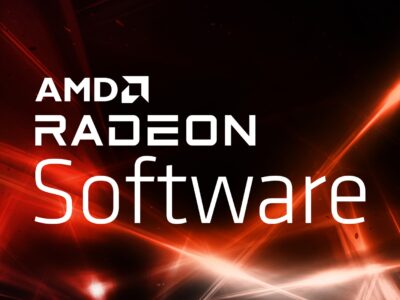With the acquisition, AMD is expanding beyond its purview of CPUs and GPUs with a large portfolio of reprogrammable chips called field programmable gate arrays, or FPGAs, that it says will significantly expand the company’s opportunities in data centers, embedded computing and telecommunications.
Processor giant AMD has completed its all-stock purchase of FPGA designer Xilinx, in a major boost to its data center ambitions.

The deal gives AMD a foothold in markets as diverse as healthcare, automotive, telecommunications, aerospace and defense, and equips it with silicon for emerging workloads like AI and accelerated networking.

AMD (NASDAQ: AMD) today announced the completion of its acquisition of Xilinx in an all-stock transaction. The acquisition, originally announced on October 27, 2020, creates the industry’s high-performance and adaptive computing leader with significantly expanded scale and the strongest portfolio of leadership computing, graphics and adaptive SoC products. AMD expects the acquisition to be accretive to non-GAAP margins, non-GAAP EPS and free cash flow generation in the first year.

“The acquisition of Xilinx brings together a highly complementary set of products, customers and markets combined with differentiated IP and world-class talent to create the industry’s high-performance and adaptive computing leader,” said AMD President and CEO Dr. Lisa Su. “Xilinx offers industry-leading FPGAs, adaptive SoCs, AI engines and software expertise that enable AMD to offer the strongest portfolio of high-performance and adaptive computing solutions in the industry and capture a larger share of the approximately $135 billion market opportunity we see across cloud, edge and intelligent devices.”

Former Xilinx CEO Victor Peng will join AMD as president of the newly formed Adaptive and Embedded Computing Group (AECG). AECG remains focused on driving leadership FPGA, Adaptive SoC and software roadmaps, now with the additional scale of the combined company and the ability to offer an expanded set of solutions including AMD CPUs and GPUs.
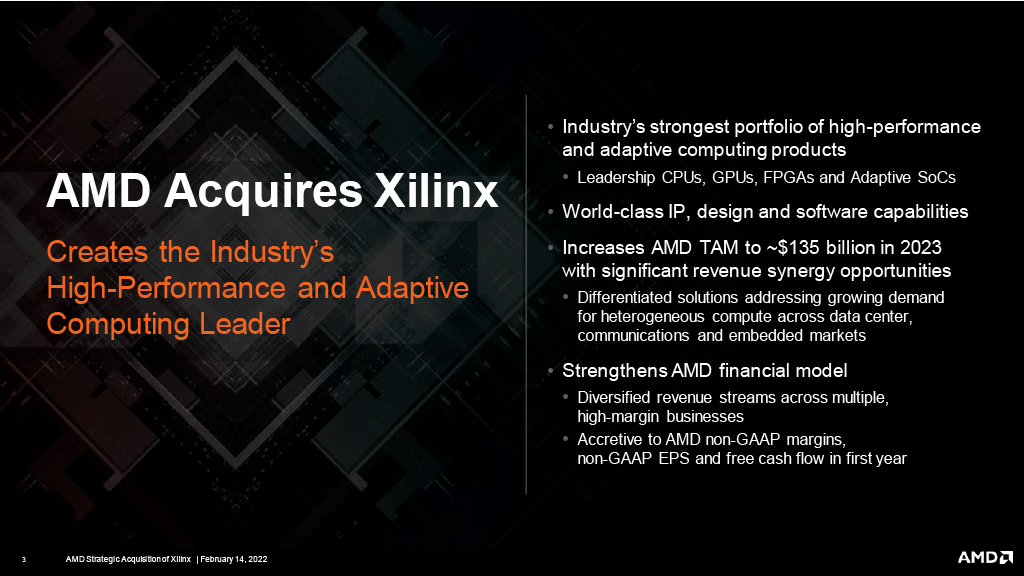
“The rapid expansion of connected devices and data-intensive applications with embedded AI are driving the growing demand for highly efficient and adaptive high-performance computing solutions,” said Victor Peng. “Bringing AMD and Xilinx together will accelerate our ability to define this new era of computing by providing the most comprehensive portfolio of adaptive computing platforms capable of powering a wide range of intelligent applications.”
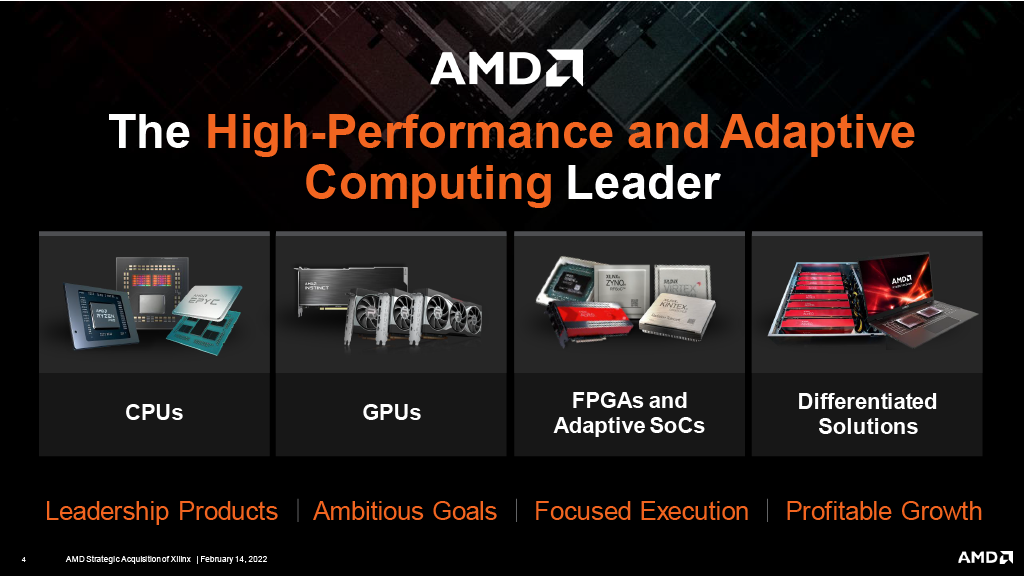
Upon close, Xilinx stockholders received 1.7234 shares of AMD common stock and cash in lieu of any fractional shares of AMD common stock for each share of Xilinx common stock. Xilinx common stock will no longer be listed for trading on the NASDAQ stock market.
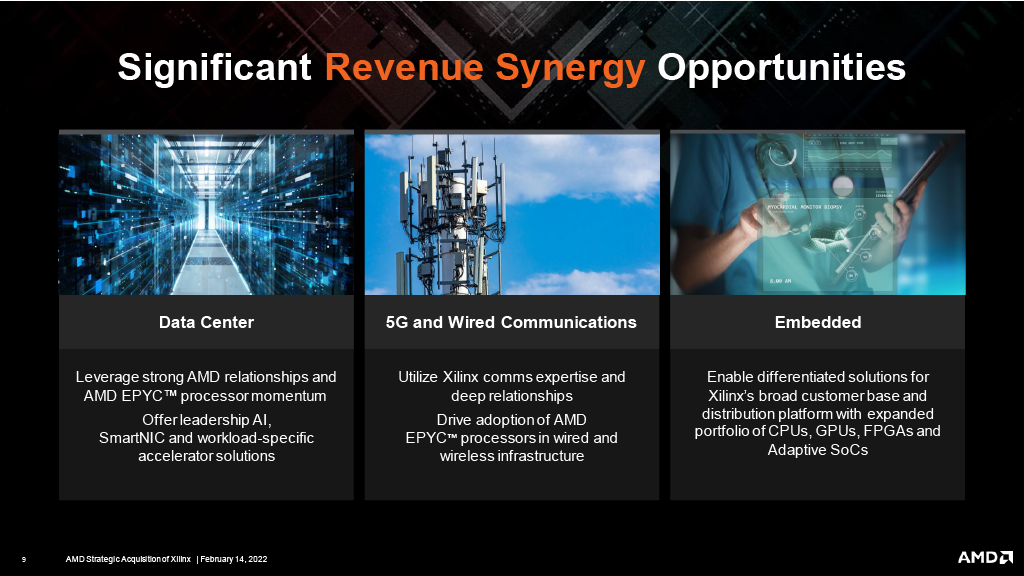
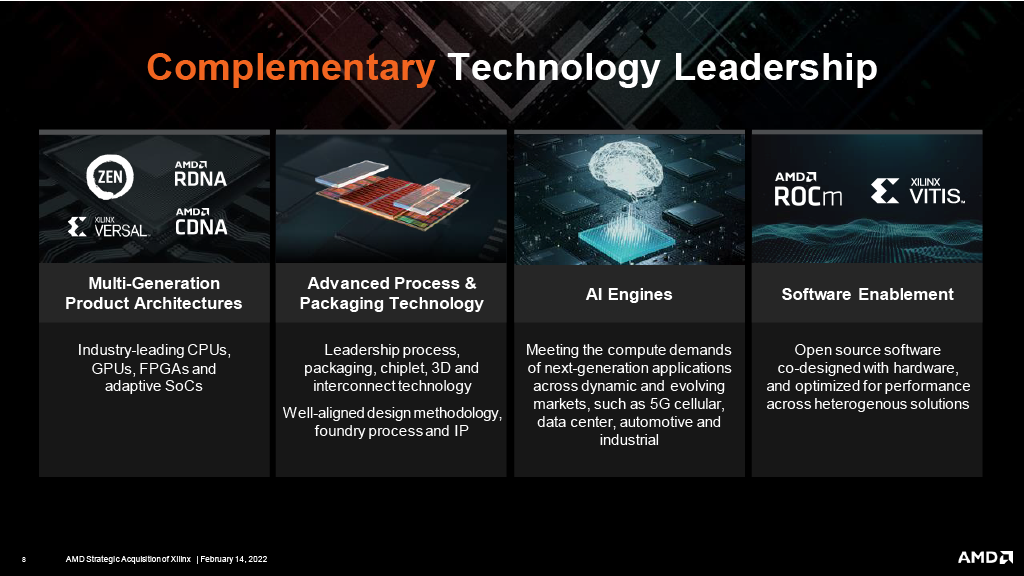
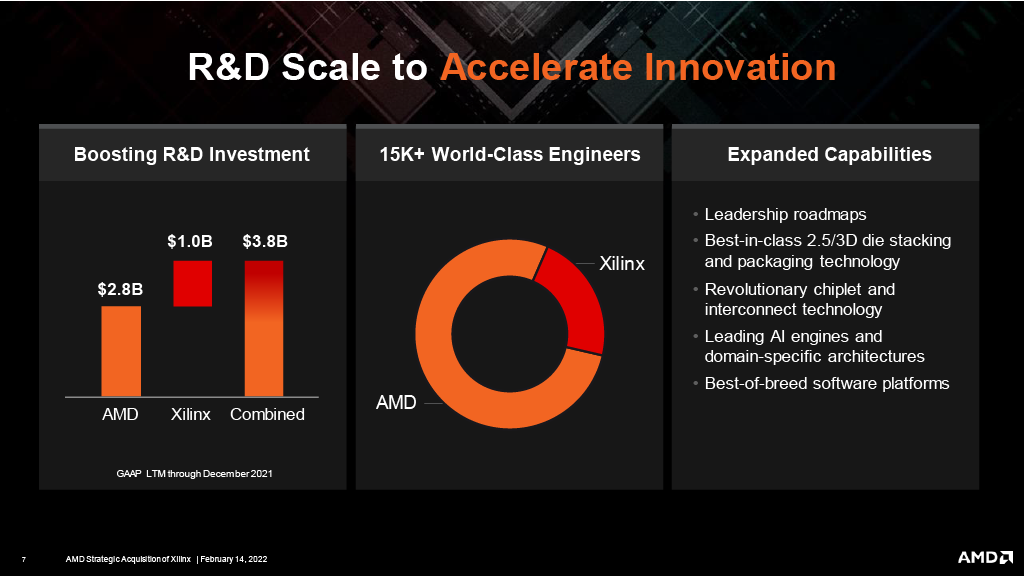
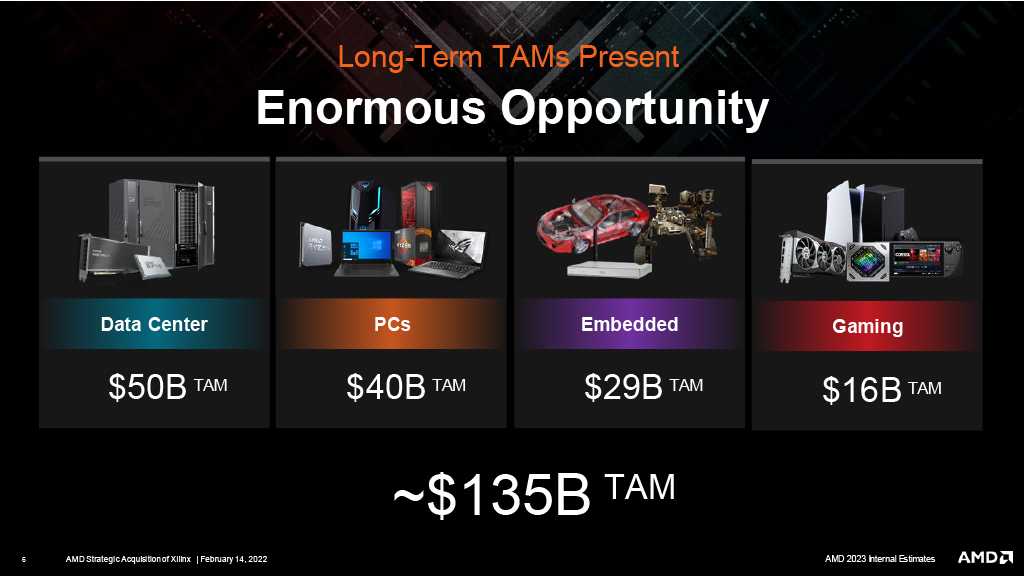
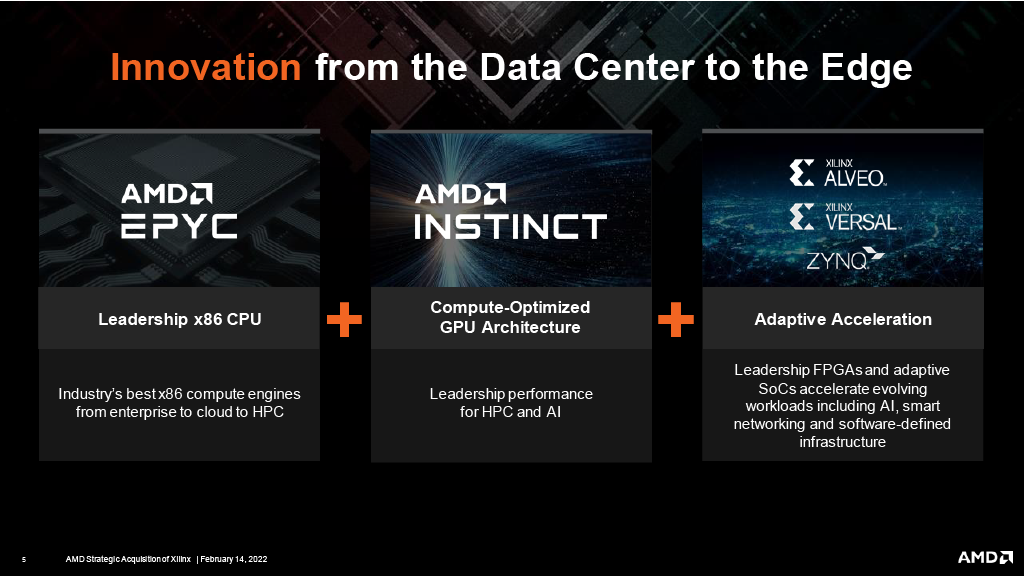 California-based Xilinx invented the first commercially viable field-programmable gate array (FPGA) back in 1985.
California-based Xilinx invented the first commercially viable field-programmable gate array (FPGA) back in 1985.
Both general-purpose processors like CPUs and GPUs, and application-specific integrated circuits (ASICs) that power much of modern electronics, have their capabilities permanently etched in silicon at the point of manufacture. Meanwhile FPGAs feature programmable logic blocks that can be configured by the customer after manufacturing to solve virtually any specific, computable problem.

Within the data center, FPGAs are particularly suitable for building hardware accelerators. After all, a chip created from the ground up to work on very specific tasks should be faster and more efficient – at those tasks – than a general-purpose processor that has to do countless other things at the same time.
FPGAs are also widely used for hardware emulation, enabling chip designers to prototype new ASICs and see the results of their work in action before having to commit to an expensive manufacturing process.
More recently, artificial intelligence workloads have emerged as some of the most promising use cases for programmable silicon. FPGAa are proving especially useful in machine learning inference – the process of applying capabilities learned by the model to new data.
AMD said Xilinx products and services portfolio will add another $55 billion to its total addressable market (TAM), and enable the company to enter industries “with long, high-margin product cycles.”
On the R&D side, the combined company will employ more than 15,000 engineers.
“The rapid expansion of connected devices and data-intensive applications with embedded AI are driving the growing demand for highly efficient and adaptive high-performance computing solutions,” said Victor Peng. “Bringing AMD and Xilinx together will accelerate our ability to define this new era of computing by providing the most comprehensive portfolio of adaptive computing platforms capable of powering a wide range of intelligent applications.”
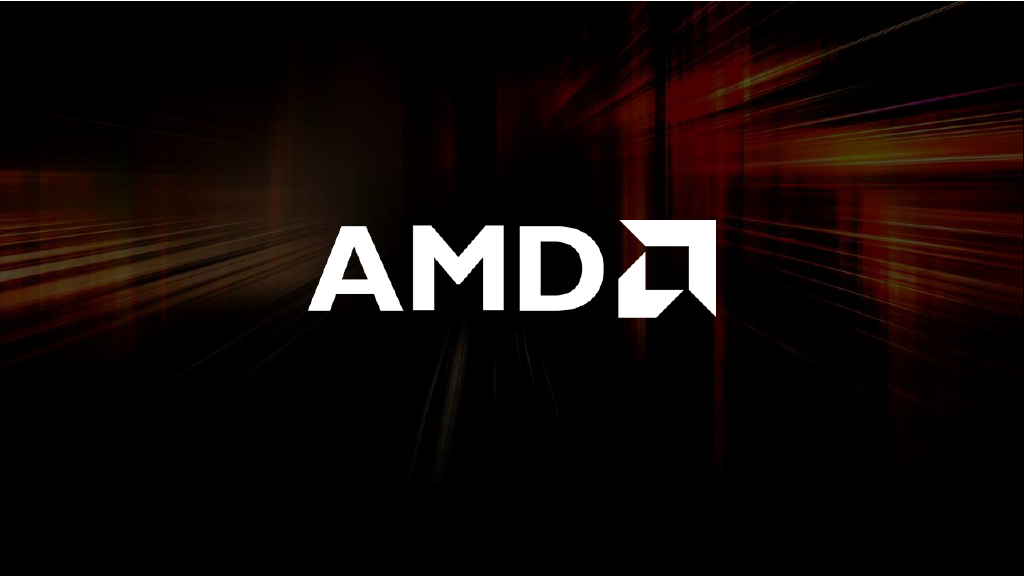
Why did AMD acquire Xilinx?
- Over the next decade, high-performance computing will increasingly be at the center of nearly every major trend shaping the future. While CPUs and GPUs will remain critical engines for those devices, in a world where algorithms are always advancing and new standards are continually emerging, we see demand growing for adaptive computing capabilities that will be critical to accelerate these emerging and evolving workloads.
- Combining AMD and Xilinx creates the industry’s high performance and adaptive computing leader.
- With the addition of Xilinx, AMD now has a significantly expanded leadership product portfolio, unmatched technology capabilities and software expertise, and increased scale that enhances our ability to power a wide range of intelligent applications from the data center to the edge to end devices.
- The new AMD will cover the most important markets and customers in the world with a combined TAM of approximately $135 billion in 2023.

